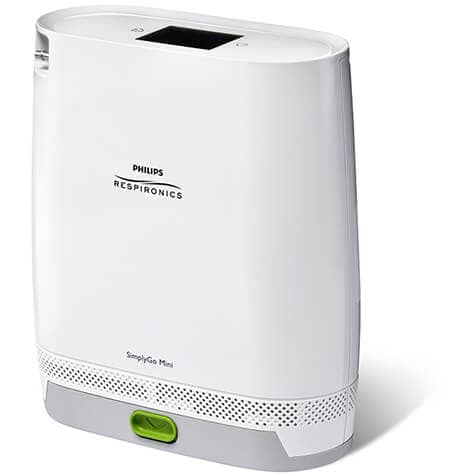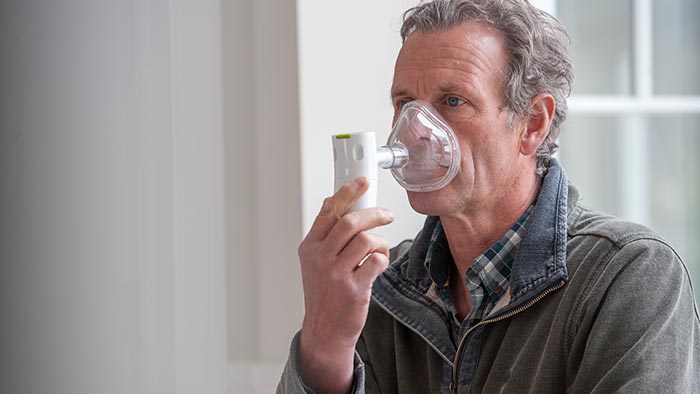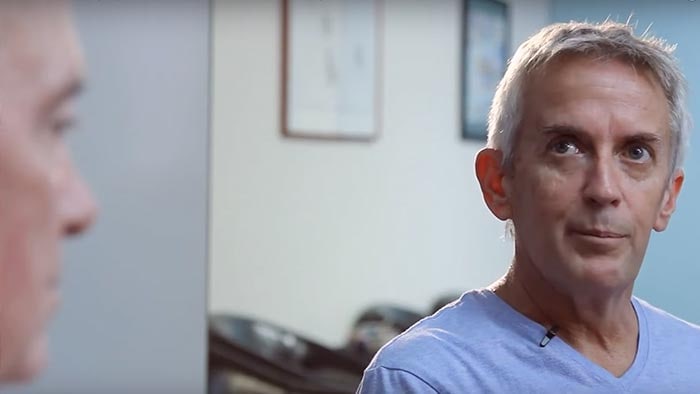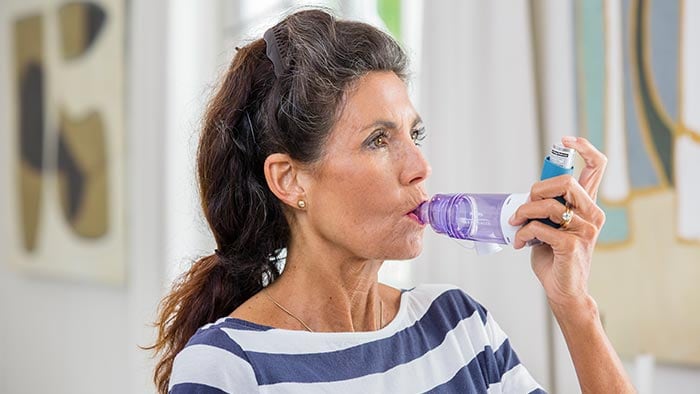Steps you can take to control symptoms
COPD can impact your life on a daily basis, but that doesn’t mean there aren’t opportunities to take control of the things that can trigger your symptoms. Regular treatment and a healthy lifestyle, including regular exercise, a balanced diet and use of breathing techniques, can help you manage COPD by controlling symptoms and slowing the development of further damage to your lungs¹.
How to live with COPD?
COPD athlete Russell Winwood and his physician Dr. Wayne Kelly discuss daily life with COPD.
More information on COPD
-
![Solutions for COPD therapy]()
Solutions for COPD therapy
Click here to learn more -
![Understanding the stages of COPD]()
Understanding the stages of COPD
Click here to learn more
Featured product

SimplyGo Mini
Have questions or want to speak to a representative?
Call us at 1800-258-7678
Download a SimplyGo Mini brochure
Have questions or want to speak to a representative?
Call us at 1800-258-7678
Download a SimplyGo Mini brochure
Follow your action plan

Preparing and following an action plan can help you live as normal a life as possible with COPD. A COPD action plan is intended to give you instructions to follow depending on how you feel and the intensity of your symptoms. Action plans are usually structured into green, yellow and red zones that correspond with your symptoms, ranging from normal to more severe. It is also important to stick to the plan even if your breathing feels OK. Seeing your doctor regularly gives you the chance to talk about how you are feeling generally, including flare-ups you may be having and possible changes to medication2.
Get fast, effective treatment when symptoms flare
Avoid common COPD symptom triggers
COPD symptoms can be triggered by your environment, so being aware of what can cause a flare-up may help you better manage your condition day-to-day. Some suggestions to reduce COPD triggers include:
Consider making lifestyle changes
Regular treatment and maintaining a healthy lifestyle can not only help you manage your symptoms, but may aid in slowing the progression of COPD and help you enjoy an active life. Consider the following lifestyle changes and management tips3,4:

Stop or avoid smoking

Excercise regularly

Eating well and maintain a healthy weight

Practice breathing and relaxation techniques

Learn how to cough effectively

Recognize and avoid the factors that trigger flare-ups

Have an action plan for flare-ups

Taking your medication as prescribed

See your doctor regularly, even if you feel well, and especially if you have any concerns
Frequently asked questions

Have a question? We’re here to help

Are you a respiratory health professional?
References
1 Healthline. COPD: Treatment Options. http://www.healthline.com/health/copd/treatment-options#Overview1 Accessed on 3 August 2015. 2 American Lung Association. Instructions for COPD MANAGEMENT PLAN. http://www.lung.org/lung-disease/copd/living-with-copd/ala-copd-management-plan.pdf Accessed on 15 May 2015. 3 bettersleepandbreathing.com. Minimizing COPD Flareups. http://www.bettersleepandbreathing.com/post/78457078071/minimizing-copd-flareups Accessed on 3rd August 2015.
4 COPD Foundation. Staying Healthy and Avoiding Exacerbations. http://www.copdfoundation.org/What-is-COPD/Living-with-COPD/Staying-Healthy-and-Avoiding-Exacerbations.aspx Accessed on 3 August 2015.





